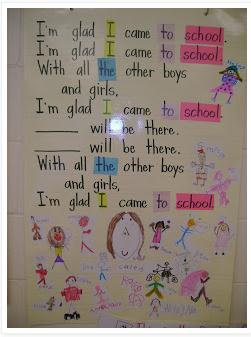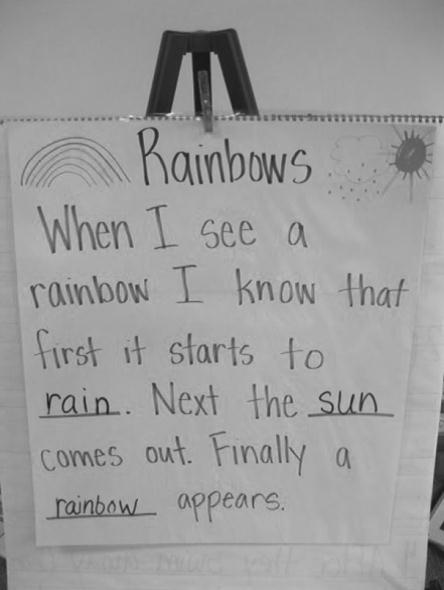1 Introducing shared reading
Start by looking at a poem used for sharing reading.
Activity 1: Shared reading
Shared reading means that you lead your students in reading the text and you are a strong role model for reading. Students must be able to see and follow the text along with you.
In shared reading, you:
- encourage all students to follow the text as you read, using your hand or a stick as a pointer
- have students join in the reading, repeat after you or read in chorus
- model how to read with expression
- demonstrate how to read and pronounce new words
- focus on letters, words and sentences as you go along, but always keeping the overall meaning and enjoyment.
Look at the poem in Figure 1, written out on a large piece of paper. It was created by a teacher for Class II students. Read it aloud.

Pause for thought
|
You can make a shared reading text on any subject, such as parts of the body, numbers, a history or geography topic, or the words of a song. See the hand-made example in Figure 2.

If you are a teacher who teaches all the subjects, shared reading can develop and reinforce both subject knowledge and language skills.
What you can learn in this unit
